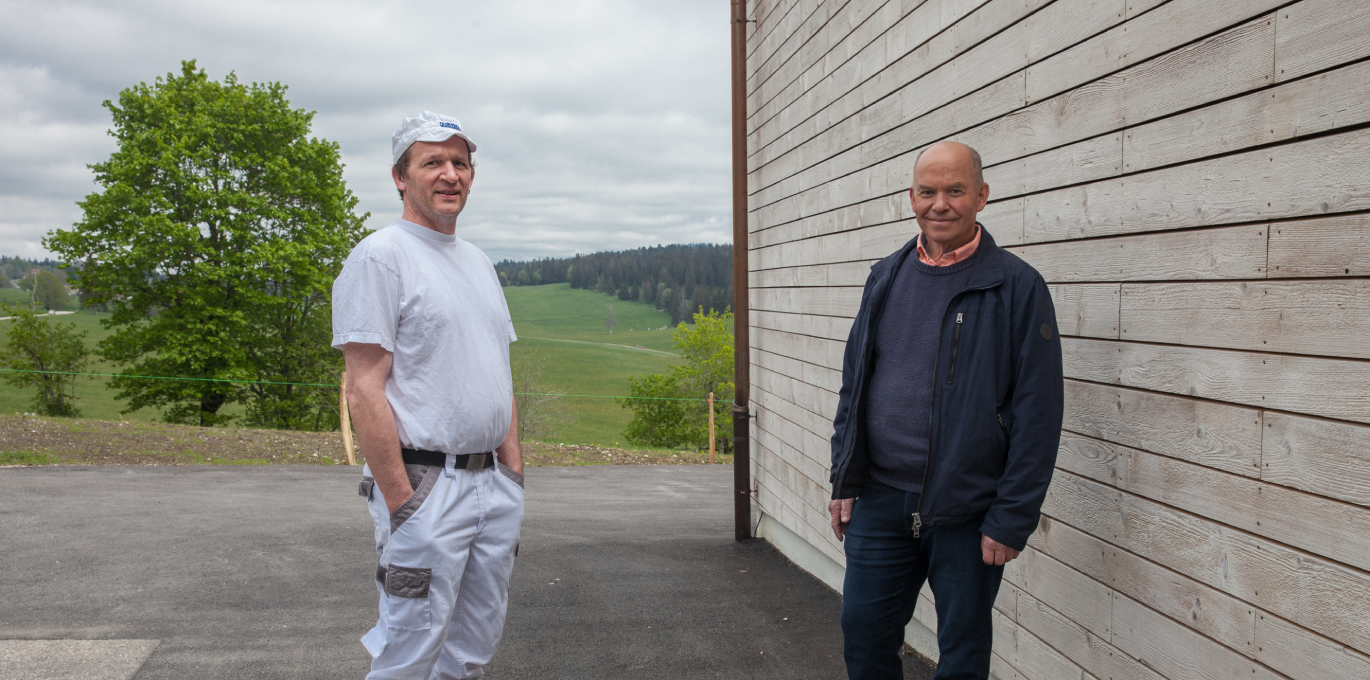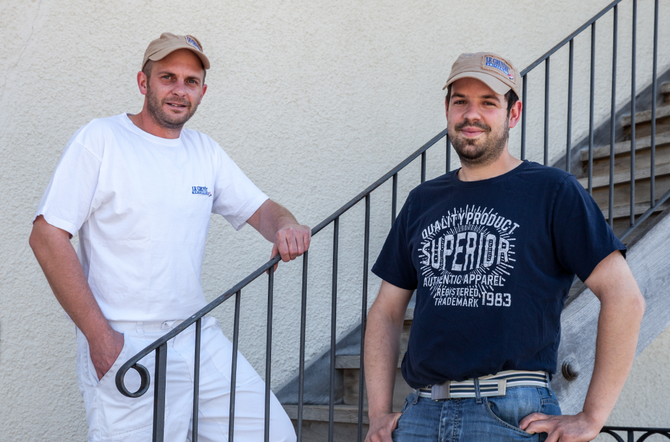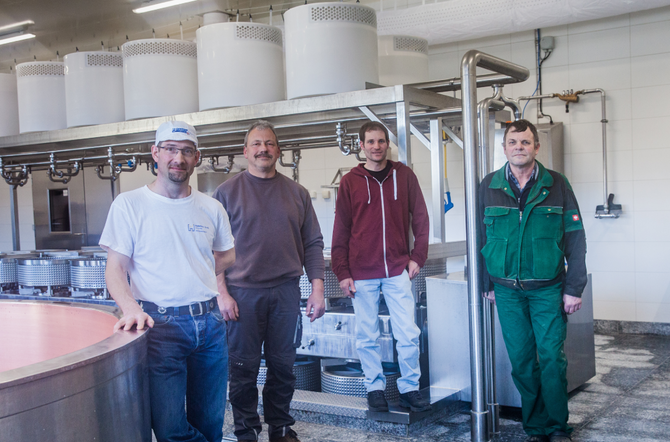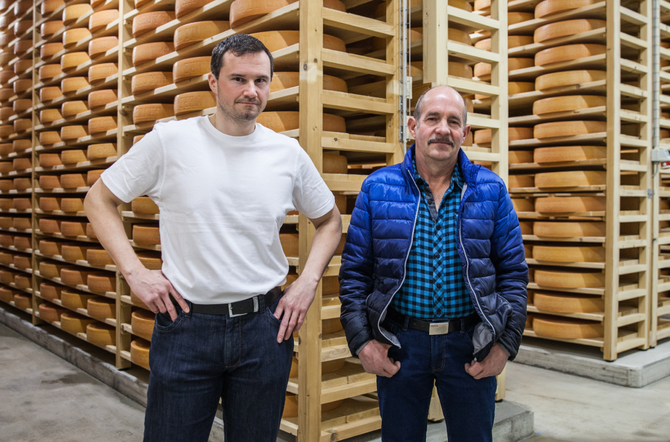The Cerneux-Péquignot cheese dairy
Several cheese dairies have recently embarked on major projects: new buildings, extensions or renovations.

The Cerneux-Péquignot cheese dairy in the Brévine valley, on the border with France, was extended to accommodate a new cellar that can now house 2,000 cheese wheels. The new building blends perfectly into the landscape, largely thanks to its timber-clad, sun-kissed facade. But this is not just any wood. These were the old cheese shelves that were cut in half before being affixed to the outside walls of the building. What a wonderful and sustainable way to add cachet!
«As a manufacturer, you want to keep the cheese under your watchful eye for as long as possible. It's a bit like our children - we like to have them near us until they are mature.»
Olivier Baudois, Cheese maker
The need for a new building was obvious. The flat roof was leaking and it was impossible to install a robot in the old cellars, which were too small and too low. "It wasn't easy to design this extension", recalls Pierre-Alain Cuenot, President of the Cerneux-Péquignot dairy and cheese company, "because we lacked space around the dairy. In the end, we opted for more height. In the new part, the cellar has a flat roof, while the washing room has a sloping roof with solar panels. This annex building blends in well with the landscape, especially with the wooden slats covering the façade."
In the past, the dairy had three small, low cellars. The production levels of Gruyère AOP were the same as they are now. But due to a lack of space, Olivier Baudois could only take care of his cheese wheels for six weeks. He then had to rent space from the merchant who continued the affinage process. "Now I keep them for fourteen weeks", the cheesemaker notes. "I'm glad we've taken the plunge! As a manufacturer, you want to keep the cheese under your watchful eye for as long as possible. It's a bit like our children - we like to have them near us until they are mature."
The new project has provided spaces and volumes that facilitate the work of the cheesemakers. "I like to say that, to be really functional, the cheese cellar must be built around the robot," says the cheesemaker. "Our job has changed a lot since the work was carried out. Before, we had to handle the cheeses and rub them. That was tough. Nowadays, it takes less time to program the robot and get it up and running. But we have to be continually vigilant so that everything works well, and above all we have to be mindful of the evolution of the cheeses." The wheels finish their affinage in the natural cellars of Mifroma SA in Ursy.
As for the three old cellars, they have been transformed. One of them has become a sewage neutralization room. "It is not yet compulsory to neutralise waste water," notes Pierre-Alain Cuenot, President of the Cerneux-Péquignot cheese and dairy company. "But, ecologically, it makes sense for the washing and rinsing water to be collected and neutralised."
In the new cellar, the first cheeses were made on 26th October thanks to the fourteen milk producers of the municipality who deliver 1 900 000 kilos of milk. This allows Olivier Baudois to produce 169 tonnes of Gruyère per year.






